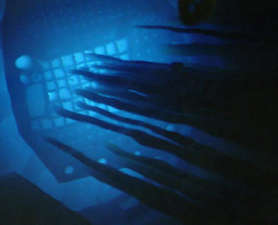Rare Earth Elements and Thorium Power.
22 Mar, 2011 04:08 pm
Thorium is present in the ores of rare earth elements rendering the processing-waste radioactive. Rather than burying it underground in concrete thorium could be bred into a nuclear fuel and most simply used in a liquid fluoride reactor (LFR). The technology can also be used to destroy plutonium and other radionuclides and is less readily employed than uranium/plutonium in perpetrating acts of terrorism..
 97% of world market
supplies of rare earth elements (REEs) come from China and look to
become insecure in regard to meeting "green" energy targets, since
exports of REEs are scheduled to be retained for Chinese energy
projects. REEs are essential raw materials for the fabrication of
high-performance magnets in hybrid cars and wind-turbines. Monazite
sands contain around 45 - 48 % cerium, 24% lanthanum, 17% neodymium, 5%
praseodymium, along with minor quantities of samarium, gadolinium and
yttrium. Europium concentrations tend to be low, in the region of
0.05%, and very low concentrations of the heaviest lanthanides in
monazite accord with the term "rare" earth for these elements, with
correspondingly high prices. The thorium content of monazite is variable
and can be as high as 20 - 30 %, although commercial monazite sands
typically contain 6 - 12% thorium oxide. In view of the radioactive
nature of thorium, a hazard is posed from waste produced in the
processing of rare earth oxides, which contains it.
97% of world market
supplies of rare earth elements (REEs) come from China and look to
become insecure in regard to meeting "green" energy targets, since
exports of REEs are scheduled to be retained for Chinese energy
projects. REEs are essential raw materials for the fabrication of
high-performance magnets in hybrid cars and wind-turbines. Monazite
sands contain around 45 - 48 % cerium, 24% lanthanum, 17% neodymium, 5%
praseodymium, along with minor quantities of samarium, gadolinium and
yttrium. Europium concentrations tend to be low, in the region of
0.05%, and very low concentrations of the heaviest lanthanides in
monazite accord with the term "rare" earth for these elements, with
correspondingly high prices. The thorium content of monazite is variable
and can be as high as 20 - 30 %, although commercial monazite sands
typically contain 6 - 12% thorium oxide. In view of the radioactive
nature of thorium, a hazard is posed from waste produced in the
processing of rare earth oxides, which contains it.A controversial REE processing plant is to be built by the Australian based mining company Lynas in Malaysia where it is argued that environmental protection laws are less rigorous than in Australia. The plant is predicted to produce one third of global demand for REEs in two years, hence breaking the Chinese monopoly. It is intended to bury the thorium in concrete, but a better option would be to use the material as a nuclear fuel in place of uranium the price of which has recently risen above $100/pound, in coincidence with the price of crude oil which is now also above $100/barrel.
Now thorium cannot be used directly as a fuel but must first be bombarded with neutrons and "bred" into uranium-233 as the nuclear fuel using slow neutrons, thus avoiding the liquid sodium coolant of uranium-plutonium breeder reactors, and which has the following additional advantages. (1) Plutonium and uranium could still be consumed in a thorium reactor, but without the need to manufacture more" plutonium. (2) While uranium-235 and plutonium-239 can be shielded to avoid detection in a suitcase to use that cliche, uranium-233 could not, because it is always contaminated with uranium-232, a strong gamma-ray emitter, which is far less easily concealed as a bomb.There is the final matter of the exact means for obtaining energy from thorium, for example using very large accelerator driven systems (ADS). A more modest alternative is the "Liquid Fluoride Reactor" (LFR), which is described and discussed in considerable detail on the http://thoriumenergy.blogspot.com/ blog, and it appears likely that the LFR may provide the best means to achieve our future nuclear energy programme.
-
12/12/12
ÂPeak Oil is Nonsense Because ThereÂs Enough Gas to Last 250 Years.
-
05/09/12
Threat of Population Surge to "10 Billion" Espoused in London Theatre.
-
05/09/12
Current Commentary: Energy from Nuclear Fusion  Realities, Prospects and Fantasies?
-
04/05/12
The Oil Industry's Deceitful Promise of American Energy Independence
-
14/02/12
Shaky Foundations for Offshore Wind Farms







 Read more
Read more